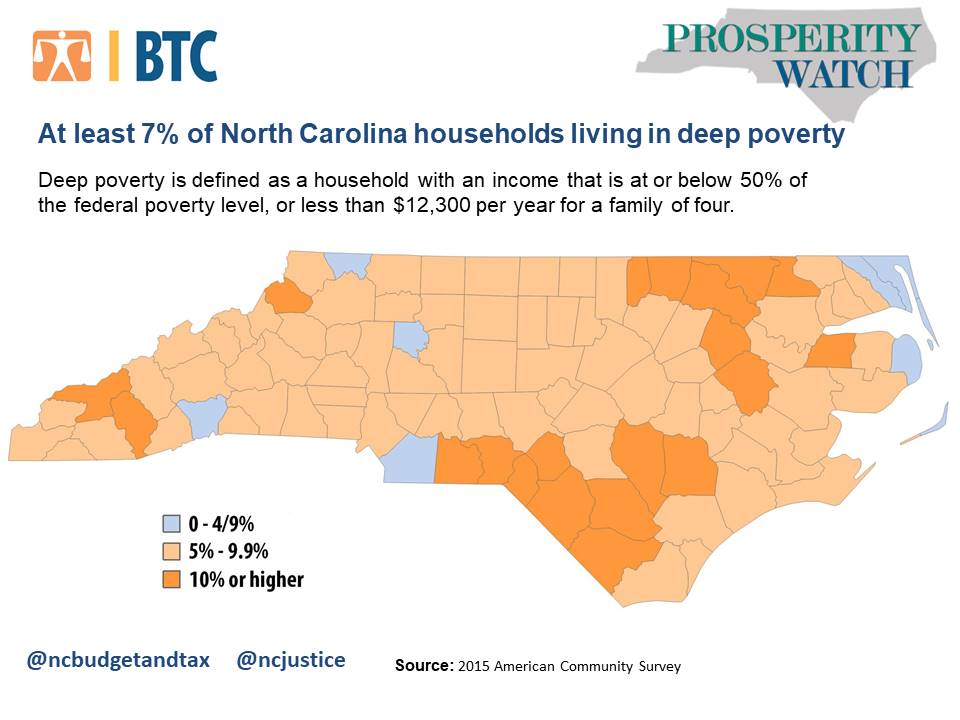Prosperity Watch (Issue 83, No.1)
February 5, 2018
Just over 7 percent of North Carolina households live in deep poverty, according to the 2015 American Community Survey. Deep poverty is defined as households living with incomes at or below 50 percent of the Federal Poverty Level, or less than $12,300 per year for a family of four. This amounts to a little more than $8 per person per day to survive on. Watauga County and Scotland County experience the highest rates of deep poverty in North Carolina, where nearly a fifth of households live in deep poverty.[i]

However, these numbers are likely an inadequate representation of the actual need because income is substantially underreported in the survey.
Since 1996 and the Personal Responsibility and Work Opportunity Reconciliation Act, also known as “welfare reform”, the nation has seen a rise in the number of families living in deep poverty. This trend can largely be attributed to the disappearance of cash-based benefits to families with low incomes such as Aid to Families with Dependent Children and the state Earned Income Tax Credit. As a result, a stable source of cash flow has become virtually nonexistent for those living in deep poverty, and many households live off less than $2 per person per day.[ii]
Families living in deep poverty survive off of support from the Supplemental Nutrition Assistance Program (SNAP) and the informal economy. While cash assistance programs, such as Temporary Aid to Needy Families (TANF) are available, they are not adequate to meet the need of those living in extreme poverty and many families to do not apply because they do not think they will meet the program’s eligibility guidelines. In 2015, only 7 percent of North Carolina families in poverty received TANF, falling far below the national average of 23 percent.[iii]
[ii] Edin, K. & Schaefer, L. (2015). $2.00 a day: Living on almost nothing in America. New York, NY: Houghton Mifflin Harcourt Publishing Company.
 Justice Circle
Justice Circle 